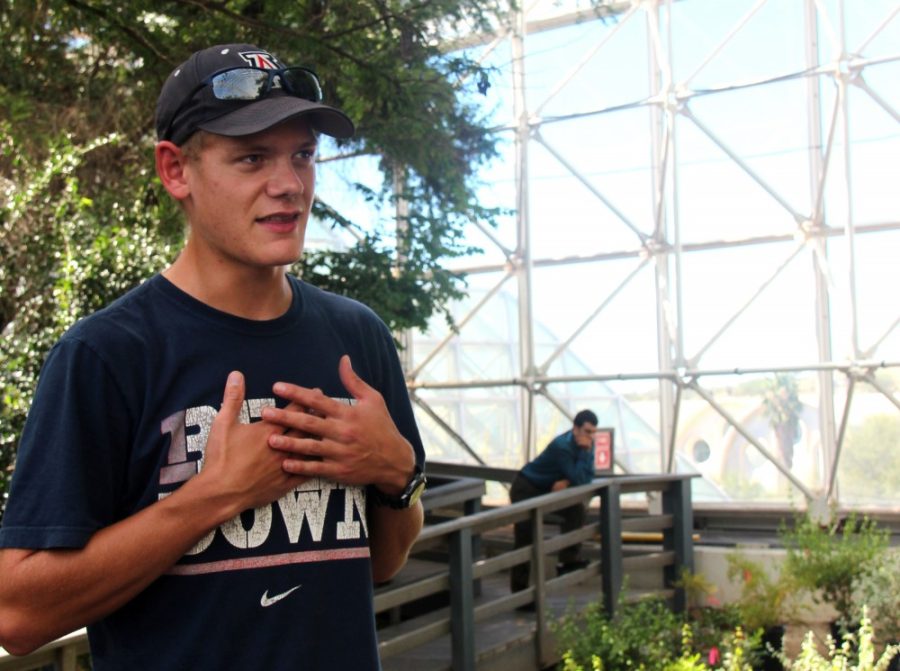Imagine a solar-covered bench where you could relax outdoors and charge your phone. As a part of its initiative to increase the amount of solar energy around the UA campus, a student club called the SolarCats is setting its sights on a solar-powered charging bench for its members’ next project.
The SolarCats are comprised of students interested in advancing solar energy on campus and around Tucson. The club attracts students from majors that are far outside traditional energy disciplines. SolarCats President Megan Montoya is a sophomore studying molecular and cellular biology and treasurer Jordan Barrows is a junior studying biochemistry and molecular and cellular biology.
The SolarCats originated in the Posada San Pedro Residence Hall when Dr. John Pollard, the dorm’s faculty fellow, gathered a group of interested students to push for the installation of solar energy panels on the roof of Posada San Pedro.
“The club was called PSPSP, Posada San Pedro Solar Panels,” Barrows said. “They succeeded. They installed 40 [to] 41 solar panels up on top of Posada San Pedro, and that was kind of the flagship project. The club grew a little bit more, and they evolved into the SolarCats.”
Since then, the group’s most recent completed project has been the sustainability mural located in the backyard of the Honors College’s Slonaker House. Beginning in 2013, the SolarCats started working on a project to outfit the Parking and Transportation Services golf carts with solar panels. The original idea was to replace the roofs of two golf carts with solar panels and compare the usage and battery life of those golf carts to golf carts without solar panels. The project presented many problems, however.
“One of the solar panels didn’t fit. We had trouble communicating, and the golf cart didn’t end up being used as much as we thought it would,” Barrows said.
Due to these issues, the SolarCats modified their ambitions.
“The scope of the project has changed a little bit into looking not so much at trying to collect data and more at looking into a review of how to do this type of project,” Barrows said.
With the solar bench project, the SolarCats hope to create something students can tangibly see.
“They [students] will see that this panel is actually powering my phone. I can see it actually working as opposed [to how] they know panels are on campus, but they don’t know where they are,” Montoya said.
For the project, the SolarCats will be working with Biosphere 2, which has offered to donate its unused solar panels for the construction of the bench. As of now, the SolarCats are still in the planning and fundraising stages of the project.
“You can sit there and there will be a bunch of outlets,” Montoya said. “We will generate the power during the day and hopefully store it in a battery during the night.”
On top of their solar projects around campus, the SolarCats are also involved in community outreach. They have tables at events such as Homecoming to engage both UA students and members of the Tucson community.
They often bring a solar-powered water fountain with them to teach others how solar works. Their solar-powered nail polish demonstrations are also a hit. The polish turns from clear to pink when hit by the sun’s rays.
“I am really interested in getting people involved and educated about how solar works and what it can be used for,” Barrows said.
With students like those involved in the SolarCats, the future seems bright for innovation in solar technology in and around the UA.
Follow Natalie Robbins on Twitter.









